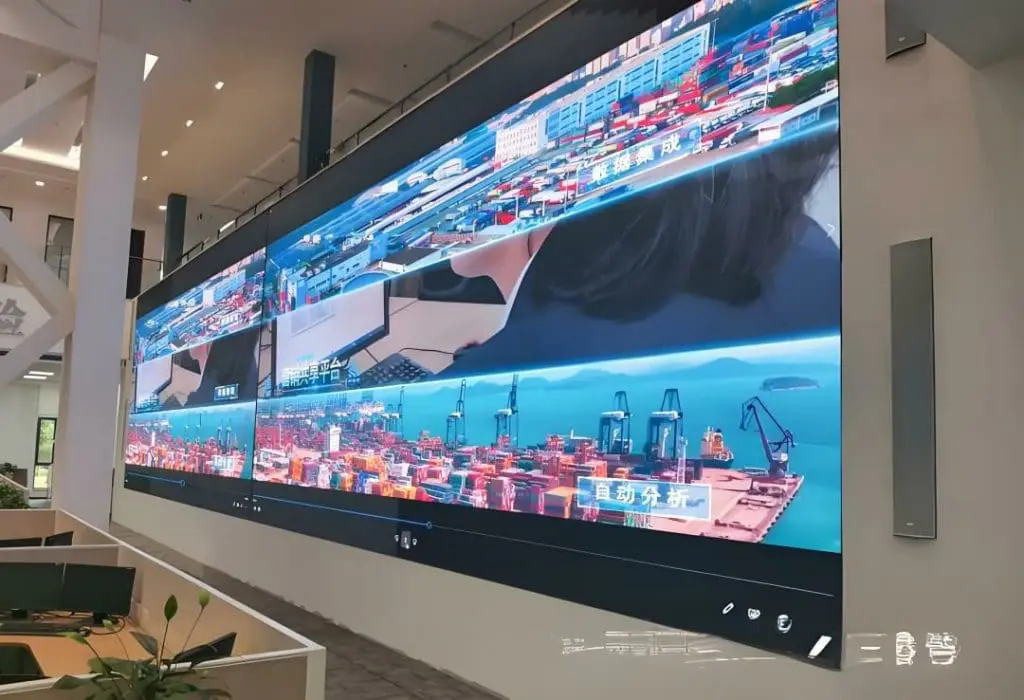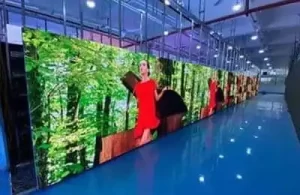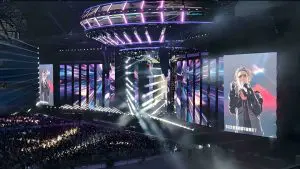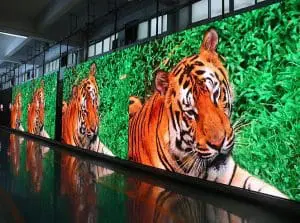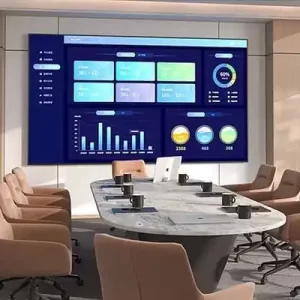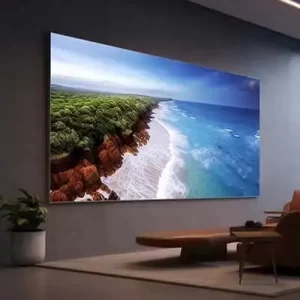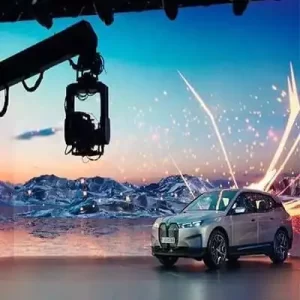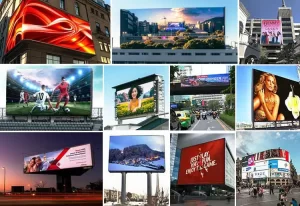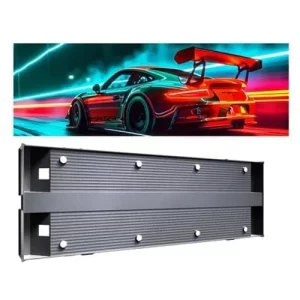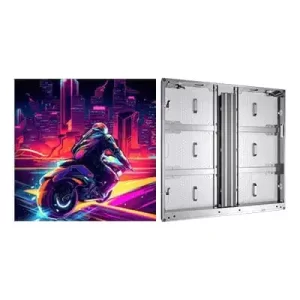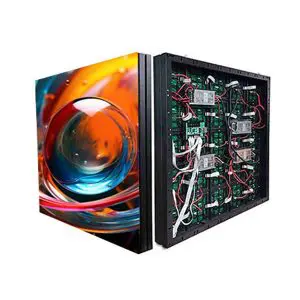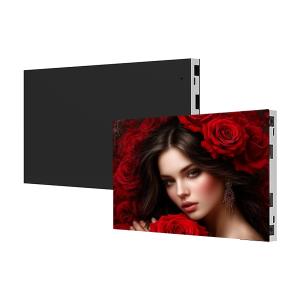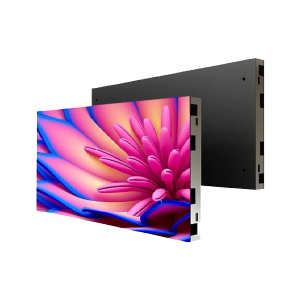LED Display screens in public places have become a vital part of modern cities, enhancing communication, advertising, and entertainment. These screens, often placed in high-traffic areas such as city squares, transportation hubs, shopping malls, and streets, act as powerful tools for delivering real-time information, engaging visuals, and interactive content. Their versatility and ability to captivate large audiences make them a cornerstone of urban infrastructure.
In this article, we’ll explore the benefits, key applications, types, and features of LED screens in public places and how they shape the way we interact with urban environments.
What Are LED Screens in Public Places ?
Public LED screens are large-format digital displays that use light-emitting diodes (LEDs) to present high – quality visuals, videos, and text. These screens are specifically designed for outdoor and indoor public spaces, delivering bright and dynamic content that is visible even in challenging lighting conditions.
Why Are LED Screens Important in Public Places ?
LED screens have changed the way we experience public spaces by :
- Improving communication through real-time updates and announcements.
- Enhancing advertising opportunities with dynamic and targeted content.
- Promoting public engagement via interactive visuals and campaigns.
- Creating entertainment and ambiance with visually stunning displays.
Benefits of LED Screens in Public Places
LED screens offer a range of benefits for cities, businesses, and citizens. Here’s why they are essential in urban environments:
1. Real-Time Communication
One of the most important benefits of LED screens in public places is their ability to deliver real-time information, such as:
- Emergency alerts, weather updates, and safety instructions.
- Transportation schedules and delays in train stations, airports, and bus terminals.
- Public announcements or event schedules in city centers or parks.
2. Captivating Advertising Platform
For advertisers, public LED screens are invaluable as they:
- Deliver dynamic and eye-catching content compared to static billboards.
- Allow targeted advertising based on time, audience demographics, or location.
- Support multiple campaigns that can rotate seamlessly on the same screen.
3. Enhancing Public Engagement
Public LED screens foster engagement by:
- Displaying interactive campaigns such as polls, games, or social media feeds.
- Promoting cultural events, festivals, or public awareness campaigns.
- Creating immersive experiences through visuals or augmented reality (AR) content.
4. Supporting City Branding
Cities can use LED screens to showcase their identity and culture by:
- Displaying iconic landmarks, art, or local traditions.
- Sharing messages about sustainability, innovation, or tourism campaigns.
- Lighting up urban spaces with creative visuals that enhance their aesthetic appeal.
5. Revenue Generation
LED screens in public places are a source of revenue for cities and businesses. They can:
- Display advertisements from local and global brands.
- Showcase sponsored content during events or peak hours.
- Rent screen space to organizations or event organizers.
6. Entertainment and Ambiance
Finally, LED screens add life to public spaces by:
- Showing live broadcasts of sports games, concerts, or significant events.
- Displaying artistic visuals, animations, or seasonal decorations.
- Creating a welcoming and vibrant atmosphere in busy areas.
Applications of LED Screens in Public Places
LED screens are used across a variety of public spaces for different purposes. Here are the most common applications:
1. City Squares and Landmarks
In city centers or famous landmarks, LED screens serve as:
- Digital billboards for advertising and announcements.
- Event displays for concerts, festivals, or public gatherings.
- Art installations that enhance the visual appeal of urban spaces.
2. Transportation Hubs
In airports, train stations, and bus terminals, LED screens provide:
- Real-time updates on arrivals, departures, and delays.
- Maps, wayfinding, and travel information for passengers.
- Advertisements targeting travelers and commuters.
3. Shopping Malls and Retail Areas
In retail environments, LED screens are used to:
- Promote sales, discounts, and new arrivals.
- Display branding campaigns and product launches.
- Create engaging visual experiences, such as interactive storefronts.
4. Sports Arenas and Stadiums
In sports venues, LED screens are critical for:
- Displaying live game footage, scores, and player stats.
- Showing advertisements during breaks.
- Engaging fans with crowd games, trivia, or live social media feeds.
5. Highways and Roadsides
Along highways and busy streets, LED screens are used as:
- Digital billboards for advertisements.
- Traffic management displays to inform drivers about conditions, closures, or accidents.
- Emergency alert systems for weather warnings or safety messages.
6. Parks and Recreational Spaces
In parks and public recreational areas, LED screens are used for:
- Broadcasting movies, sports, or cultural performances.
- Sharing educational content, such as environmental awareness campaigns.
- Displaying artistic or animated visuals to create a relaxing atmosphere.
Types of LED Display Screens for Public Places
The type of LED Display screen used depends on the location, purpose, and environmental conditions. Here are the most common types:
1. Outdoor LED Screens
- Best For: City squares, highways, and open-air events.
- Features:
- Weatherproof with an IP65+ rating to resist rain, dust, and heat.
- High brightness (3,000–5,000 nits) for visibility in direct sunlight.
2. Transparent LED Screens
- Best For: Glass facades, retail storefronts, and modern architecture.
- Features:
- Lightweight and see-through design.
- Ideal for blending with urban aesthetics while delivering content.
3. Curved LED Screens
- Best For: Landmarks, unique spaces, or creative installations.
- Features:
- Flexible panels that can be shaped to fit curved structures.
- Seamless visuals for immersive experiences.
4. LED Video Walls
- Best For: Large indoor spaces like shopping malls or airports.
- Features:
- Modular design for customizable sizes.
- High-resolution displays for close viewing.
5. Freestanding LED Displays
- Best For: Temporary installations or movable displays in public areas.
- Features:
- Portable and easy to reposition.
- Perfect for events or seasonal campaigns.
Key Features to Consider
When selecting an LED screen for public places, prioritize the following features :
1. Weather Resistance
Outdoor LED screens must be weatherproof to handle extreme conditions. Look for screens with an IP65 or higher rating.
2. High Brightness
To ensure visibility in sunlight or brightly lit areas, choose screens with brightness levels of 3,000–5,000 nits for outdoor use and 800–1,500 nits for indoor use.
3. Energy Efficiency
Energy – efficient LED screens reduce operating costs and align with sustainability goals in urban projects.
4. Durability
Public LED screens must be robust and designed to withstand frequent use, accidental impacts, and environmental wear and tear.
5. Customization
Choose screens that can be customized in size, shape, and design to fit the location and purpose.
Cost of LED Display Screens for Public Places
The cost of LED screens varies depending on size, resolution, and features. Below is a general price guide :
| Screen Type | Pixel Pitch | Cost per m² (USD) | Best For |
|---|---|---|---|
| Outdoor LED Screen | P3–P6 | $3,000–$6,000 | City squares, roadsides, and parks. |
| Transparent LED Screen | P3–P7 | $4,000–$8,000 | Retail areas, glass facades. |
| Curved LED Screen | P2–P6 | $3,500–$7,000 | Landmarks, creative installations. |
| Freestanding Display | P2–P4 | $2,500–$4,500 | Temporary or portable setups. |










